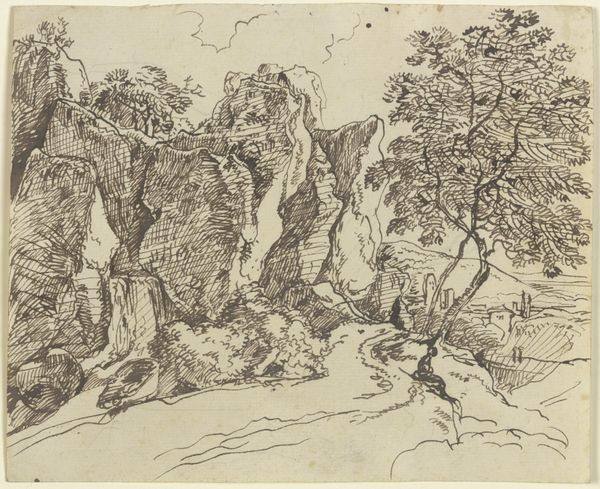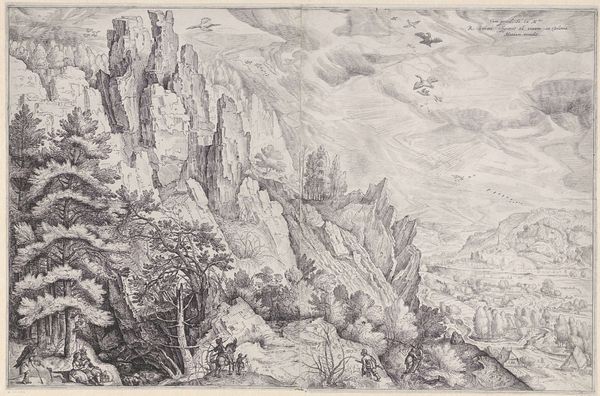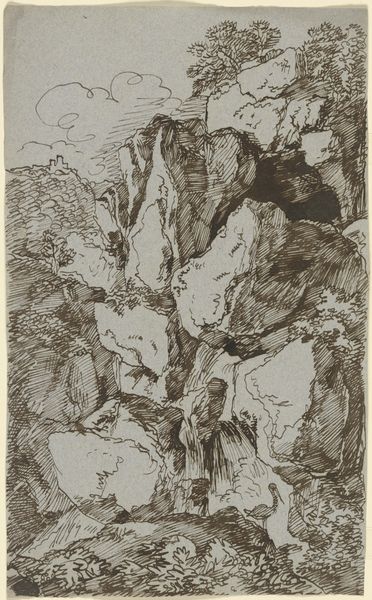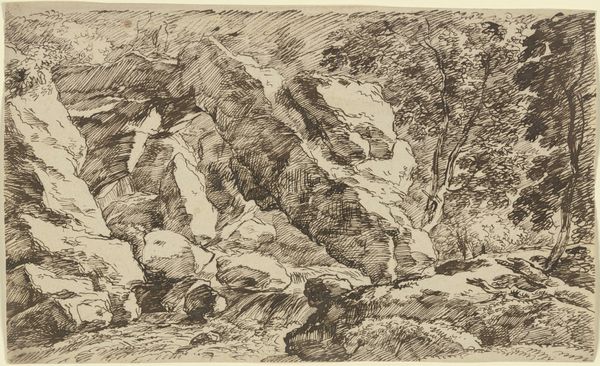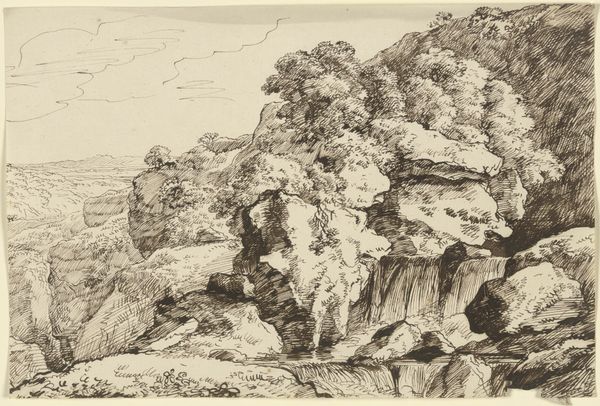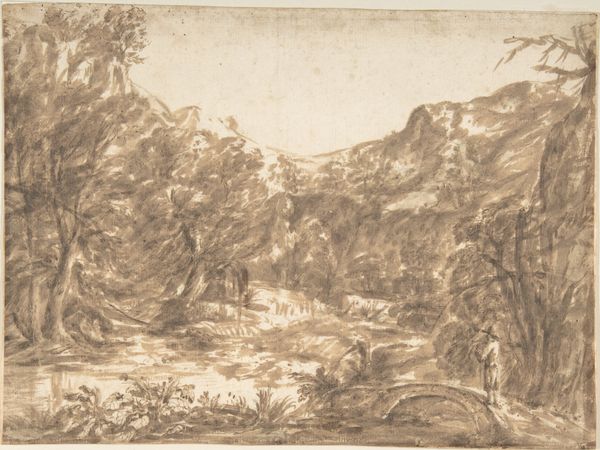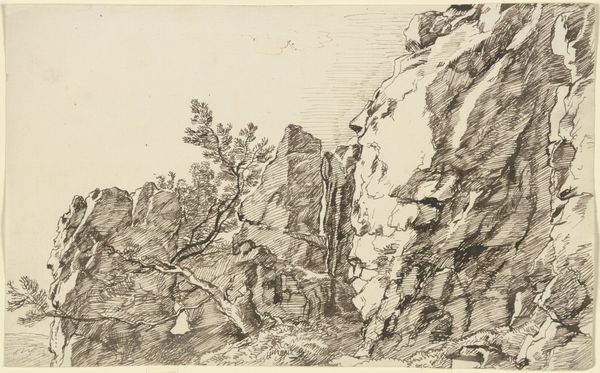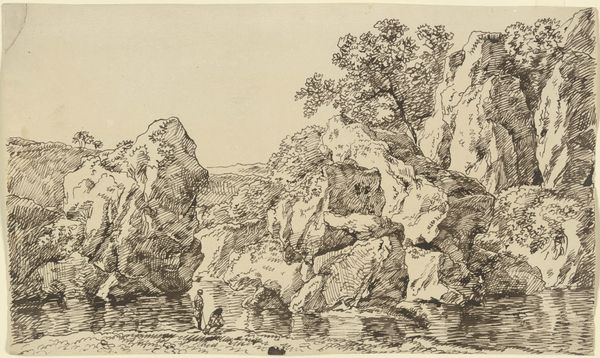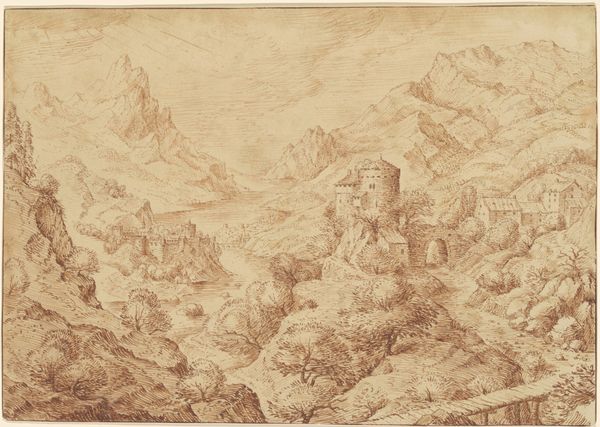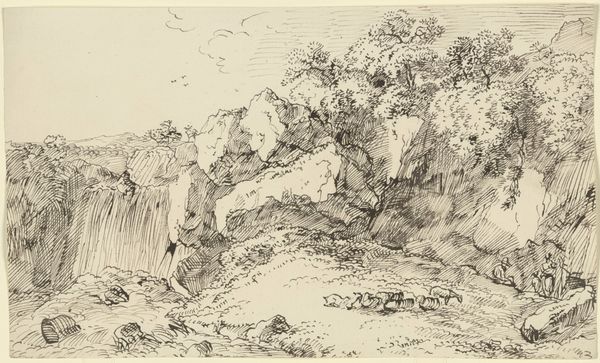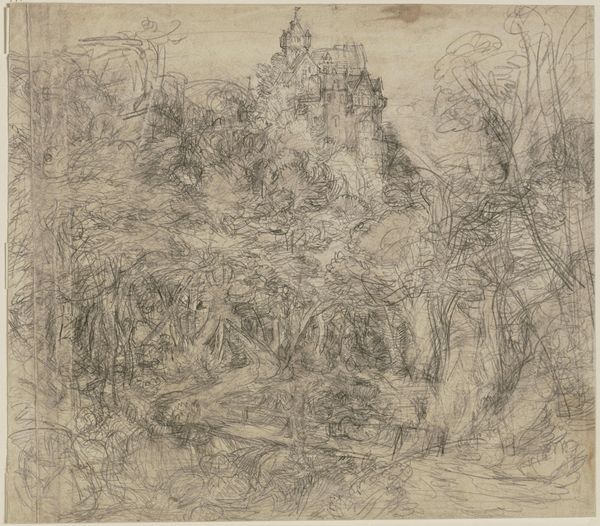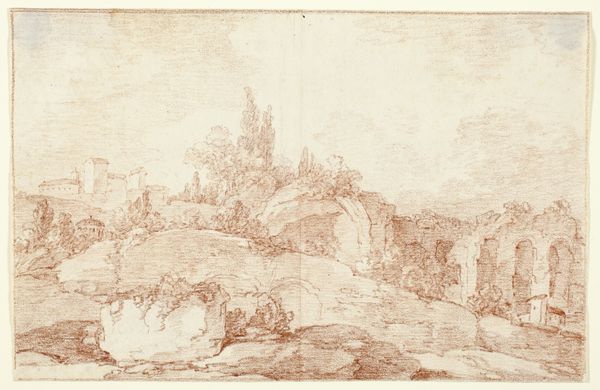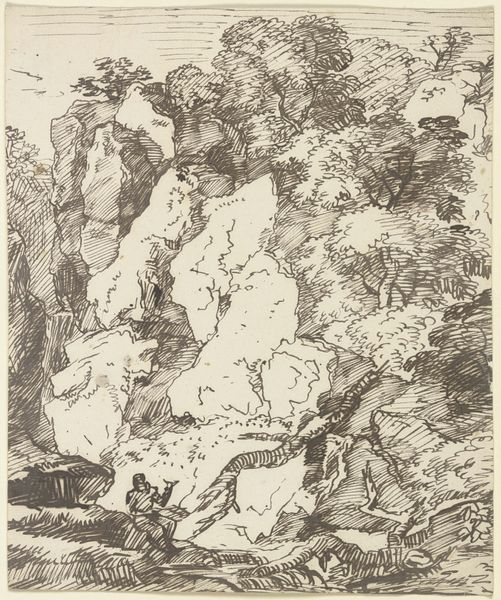
Dimensions: height 190 mm, width 252 mm
Copyright: Rijks Museum: Open Domain
Editor: Here we have Rodolphe Bresdin's "Landschap met rotsen en stenen brug over bergstroom", which translates to "Landscape with rocks and stone bridge over mountain stream," created sometime between 1864 and 1869. It's an ink drawing, and the detail is really striking. What's your take on it? What do you see in this piece? Curator: Well, viewing it through a historical lens, it reflects the Romanticism movement's fascination with nature's power. Notice how the artist positions humanity—indicated by the tiny figures under the bridge—against the imposing scale of the rocks. The drawing, executed with delicate line work, evokes the sublime, a key concept of the time. It's as much about evoking an emotional response to nature as it is about representing it. Do you think this romanticization influenced viewers at the time? Editor: Absolutely! It makes you think about your place in the world, looking up at the cliffs. It definitely resonates, even now. But isn't there something unsettling about this overwhelming power, as if nature could just swallow you up? Curator: Precisely. That tension is what defines much Romantic art. Consider the rise of industrialization during this period. Landscapes like this became a way to escape, but also to critique, the changing world. The sublime could be both awe-inspiring and terrifying. It prompts viewers to question their values and their connection to the world around them. Editor: That makes perfect sense. Seeing it as a kind of social commentary on industrialization hadn't occurred to me before. I'll definitely view Romantic art differently now! Curator: That’s the power of considering historical context. Hopefully, viewers will take away more from it than just a pretty picture.
Comments
No comments
Be the first to comment and join the conversation on the ultimate creative platform.
